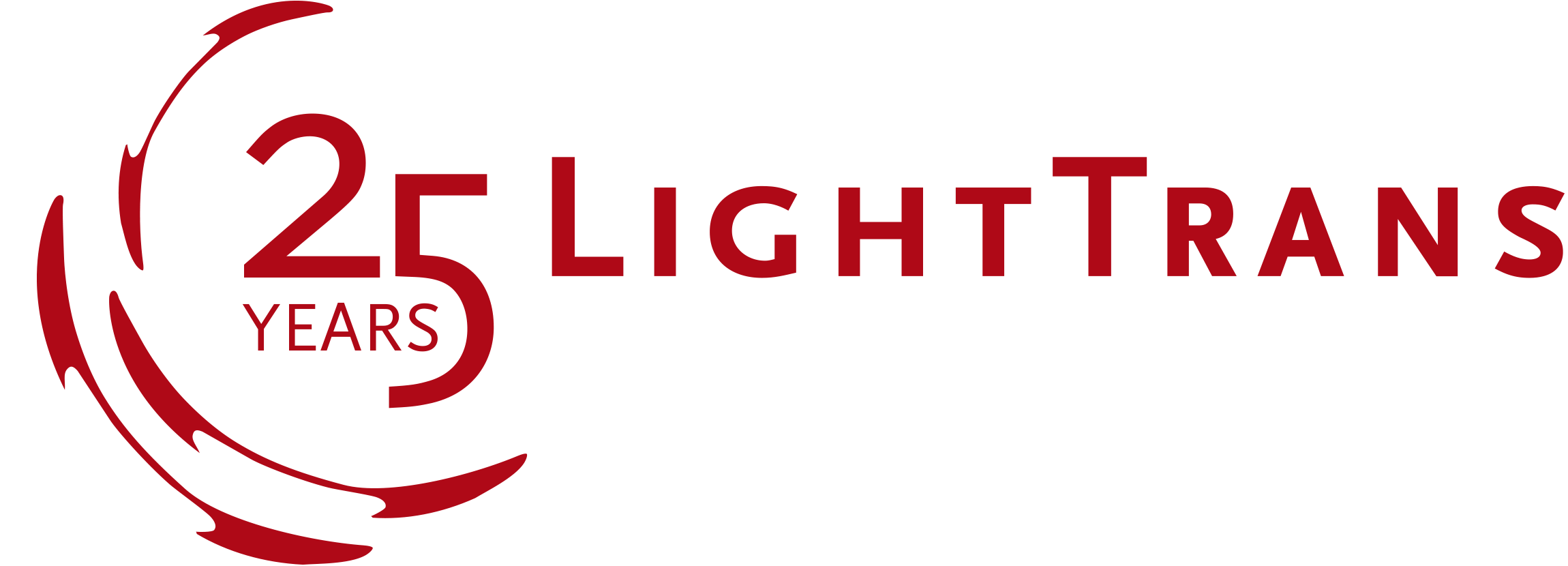What’s new in our Optical Modeling and Design Software?
Linearly Polarized (LP) Fiber Modes
To conclude our series on fiber modeling, this week we introduce another set of tools that VirtualLab Fusion makes available to its users in this field. With the help of the linearly polarized (LP) Fiber Mode Calculator it is possible to generate and investigate the Bessel and Laguerre polynomials that describe the fiber modes propagating in multimode step- or graded-index fibers respectively.
The associated LP Mode source can be employed in combination with the Multiple Light Source to configure a finite set of these modes as the light source in an optical system, which would emulate the field exiting a given fiber. This enables the simulation of how the field exiting the fiber will propagate through the rest of a complex system and be transformed by it.
To showcase the capabilities of these features, we have selected, alongside a use case that covers the LP Fiber Mode Calculator in more detail, another example that demonstrates how a certain combination of aberrations deforms the shape of the modes emanating from our fiber source.
Read moreTolerance Analysis of Fiber-Coupling Systems
In our last newsletter we put the spotlight on the parametric optimization of a fiber-coupling setup to achieve maximum efficiency, employing the user-friendly tools put at your disposal by the fast physical optics modeling and design software VirtualLab Fusion. However, a good optical design in practice is not just characterized by the optimum combination of parameters that can maximize a specific merit function. Another key aspect is its robustness: as the conditions assumed in the design process cannot be perfectly met in a real-life environment, the logical next step is to analyze how small deviations in the system geometry influence the overall result.
For this purpose, the Parameter Run in VirtualLab Fusion allows the user to perform parameter sweeps. As an example, we analyze the coupling efficiency of a well-designed fiber-coupling lens with respect to different tolerance factors, such as the lateral shift of the fiber-end position and the tilt of the coupling lens. Furthermore, a deep-dive into the scanning mode for the parameter run, in which a two-dimensional area of the parameters space is investigated (with additional possibilities for the visualization of the results), is provided below.
Read moreFiber Coupling Optimization
Fibers are some of the most versatile components in modern optics. One of their most valued characteristics is their capacity to transport optical energy with very low losses over very long distances. On the flip side, coupling light into a fiber in a way that achieves as high an efficiency as possible is often a very delicate endeavor: selecting the right optical components for the coupling and aligning the system well are, among others, fundamental steps to ensure a satisfactory coupling efficiency.
The fast physical optics modeling and design software VirtualLab Fusion enables its users to simulate and optimize core components such as the incoupling lenses, in order to design the coupling system and analyze its performance and robustness. As an introduction to this topic, in this week’s newsletter, we demonstrate two examples where the working distance and the incoupling lens are optimized using VirtualLab Fusion’s Parameter Run and Parametric Optimization tools to increase the coupling efficiency of a single-mode fiber almost to 100%.
Read moreThin-Film Structures for Photovoltaic Cells
Thin-film layer structures paired with strongly absorbing materials such as copper indium gallium selenide (CIGS) have been a stable technology for solar cell and photovoltaic applications for roughly three decades. To ensure as high an efficiency as possible, the optical engineer should optimize the materials used and layer thicknesses of the cell. To help with this task, the fast physical optics modeling and design software VirtualLab Fusion provides various tools, like the Stratified Media Component, that allow for an easy-to-use configuration of the layer system, as well as the ability to configure coating materials either by selecting them from our comprehensive in-built database, or by specifying their optical characteristics such as real part of the refractive index and absorption coefficient.
In this newsletter we share an introduction of our Stratified Media Component, as well as a simulation of an setup for a CIGS-based solar cell.
Read moreGrating based Monochromator for Spectroscopy
Spectroscopy – the study of the spectral (wavelength) composition of light – remains an important field of study in optics. Poly- or monochromators, which employ the dispersive behavior of diffractive elements to separate the different spectral components of incoming light in different directions, are often selected for this task because of their ease of use and adjustability.
The “connecting field solvers” approach implemented in the fast physical optics modeling and design software VirtualLab Fusion can simulate complex systems made up of a variety of components, as is the case in this field: gratings and refractive elements (such as parabolic mirrors) are both unavoidable parts of spectroscopic systems. This capacity of VirtualLab Fusion to simulate realistic, complex systems with its fully vectorial, fast physical optics engine offers the optical engineer invaluable tools for the task of designing and analyzing this kind of setups. As an example, this week we present a classical Czerny-Turner monochromator and give a detailed insight into the properties of our grating component.
Tools for the Analysis of Imaging Errors in Lens Systems
Imaging systems are one of the historical cornerstones of optics, with numerous applications in a wide range of different technologies. Therefore, the performance analysis of lens systems commonly used in imaging is a fundamental task for many optical engineers. To assist the optical engineer in this endeavor, VirtualLab Fusion offers a number of powerful tools.
In this newsletter, we would like to highlight, in particular, the tools for the analysis of field curvature and distortion. These two imaging errors stem from the fact that most detectors operate as plane surfaces, while lenses focus light onto a curve. These aberrations can be investigated with the easy-to-use integrated tools that VirtualLab Fusion puts at your disposal, as shown in the following examples.
Read moreDiffractive Optical Elements & Microstructures
Diffractive optical elements (DOEs) are optical components that use the diffractive properties of engraved microstructures to transform the incoming beam into the desired light distribution, using the periodicity of the structure or lack thereof to create discrete (beam splitters) or continuous patterns (beam shapers, diffusers) respectively. Because the working principle of these components is based on the diffraction of the light by these patterned surfaces, DOE beam shapers and beam splitters can be designed much thinner and lighter than their refractive counterparts, but the small structure sizes make them difficult and resource-intensive to simulate.
In this field, the fast physical optics modeling and design software VirtualLab Fusion offers a family of field solvers based on the Thin Element Approximation (TEA), which allow optical engineers to design systems with this type of devices and to analyze their behavior. As an example, below you can find an investigation of the angular dependence of a reflective diffractive beam splitter, as well as a document offering a deeper look into our diffractive optical element and microstructure components.
Read moreVolume Holographic Gratings
Volume Holographic Gratings (VHGs) are well-known for their high spectral and angular sensitivity combined with adjustable diffraction efficiencies. Hence these gratings are an appropriate tool in optical systems that require accurate spectral and angular filtering. Due to their characteristic three-dimensional and smooth modulation of the refractive index, the modeling can pose numerical challenges, e.g. determining a fine-enough discretization to respect the continuous nature of the refractive-index profile. This can make a simulation of such structures quite demanding computationally, especially when the volume grating is used as just one component in a full, more complex system.
The fast physical optics modeling and design software VirtualLab Fusion enables a fast and accurate simulation of even complex optical systems containing Volume Holographic Gratings by combining specialized solvers for the individual components, such as the Fourier Modal Method in the case of VHGs. Check out the use cases below for an example of an angular-filtering volume grating used in conjunction with a diffractive beam splitter to improve the initial design, as well as an overall introduction on how to configure a volume grating in VirtualLab Fusion.
Read more











